Sapphire Group of Biscuit Basin - page 2
Page 1 2
The southwestern corner of Biscuit Basin is occupied by the Silver Globe Complex. It comprises six active, small to medium sized geysers. In the following photo the blue pool of Silver Globe Geyser can be seen in foreground right. The shallow, water filled depression in center foreground belongs to Silver Globe Cave Geyser. It plays from an cavernous undercut whose opening is out of sight because it's directed away from the boardwalk. In the field beyond Silver Globe Geyser the two water filled vents of Silver Globe Pair Geyser are visible. A short distance beyond Silver Globe Pair an empty crater can be spotted, located directly in front of Slit Geyser's crack-shaped vent. All mentioned geysers are infrequent performers.
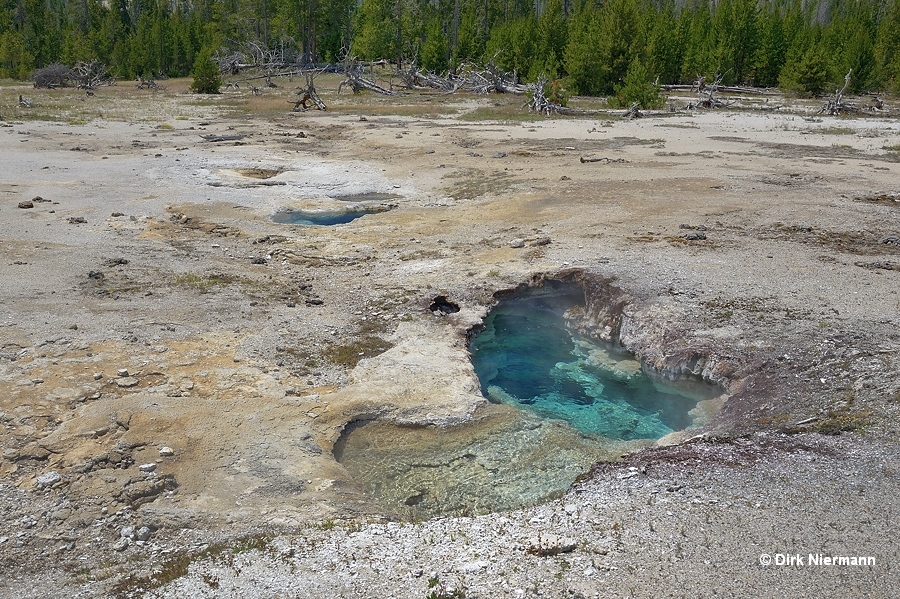
Further members of the Silver Globe Complex are Silver Globe and Avoca Spring. Reaching only a few feet height, Silver Globe is the weakest playing geyser of the complex, and it's often dormant. There is still some confusion about which spring is named Silver Globe and which one is Silver Globe Geyser; names that can be traced back to park tour operator G.L. Henderson and the year 1887. T. Scott Bryan (The Geysers of Yellowstone, 4th edition, 2008) designates the spring immediately south of Avoca Spring as Silver Globe and the one across the boardwalk as Silver Globe Geyser (as I have adopted it here), but Lee H. Whittlesey (Yellowstone Place Names, 2nd edition, 2006) applies the names vice versa.
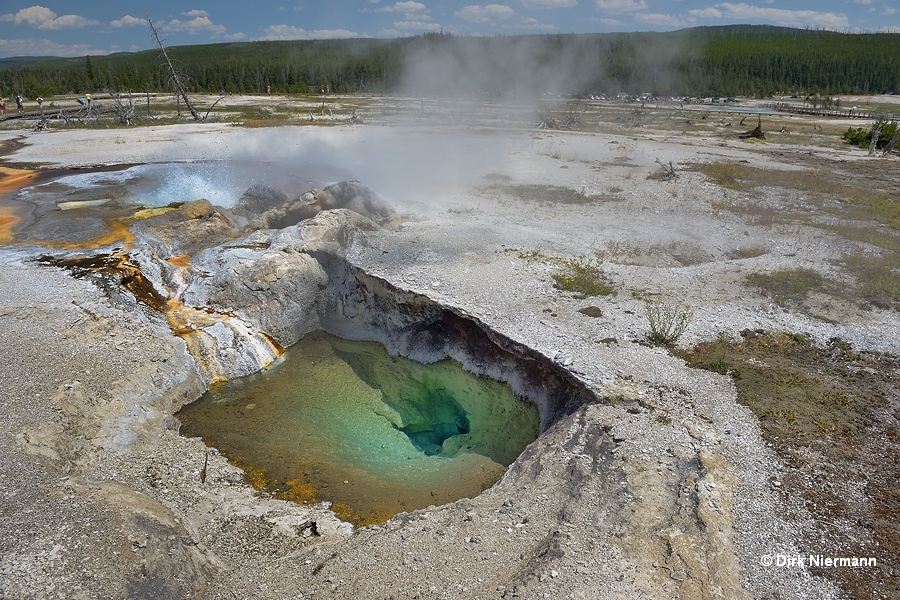
Avoca Spring is a stronger spouter with major eruptions up to 7.5 m (25 feet) high. Recovery after a major eruption lasts half an hour in maximum, then the next minors occur at intervals of 1 minute.
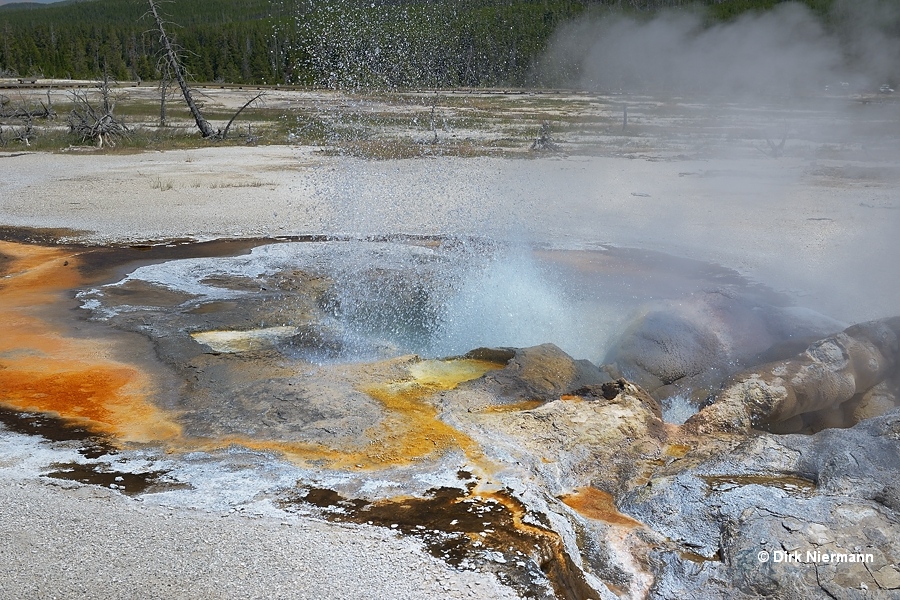
Across the boardwalk from Avoca Spring the Mystic Falls Trail branches to the west. After a few feet it passes West Geyser on the lefthand side. Eruptions of West Geyser are extremely rare. Compared to 2013 the colors indicate that the geyser has cooled down, lowering the chance of eruptive activity even further.
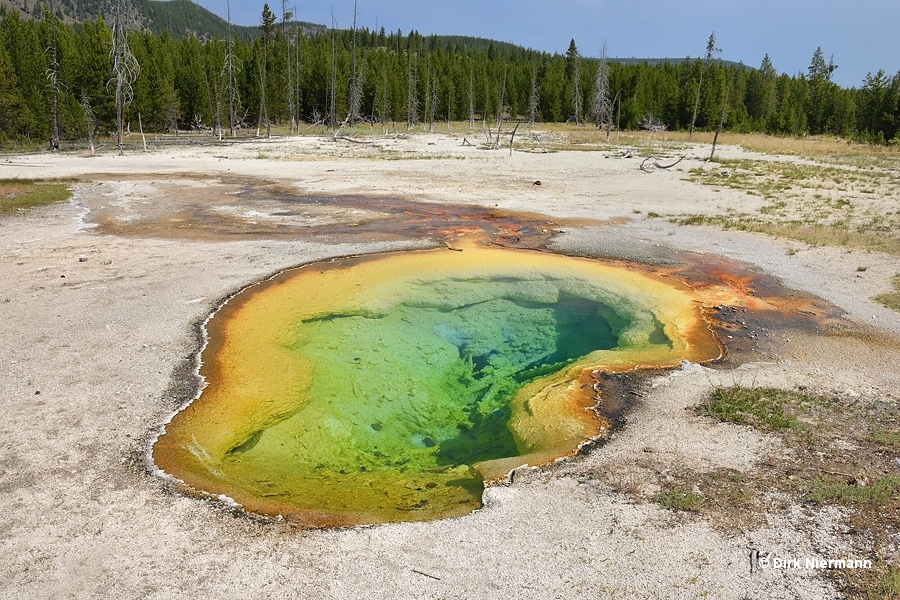
Just like West Geyser also Seaweed Spring is a rare performer. It is located east of West Geyser at some distance to the boardwalk.
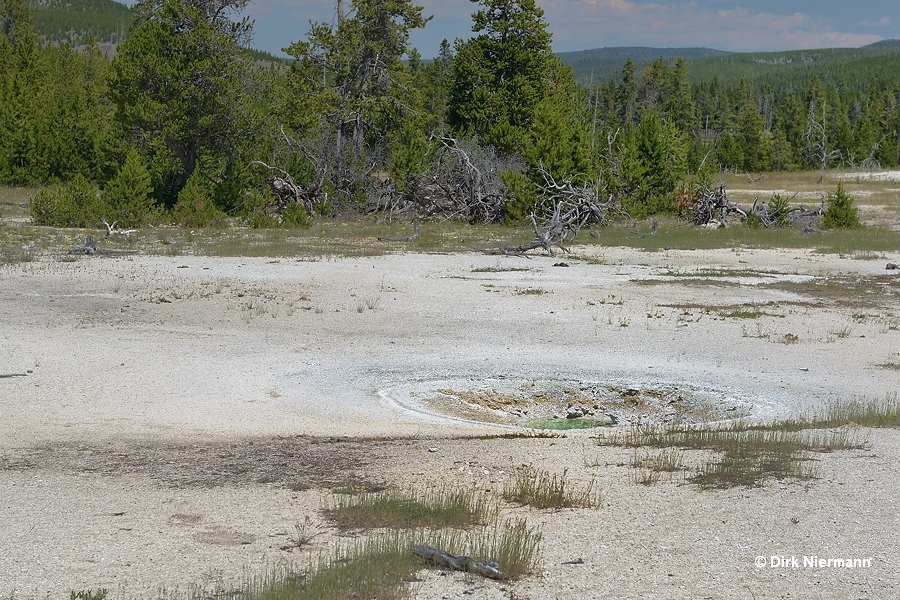
From the northwestern section of the loop trail Fumarole Geyser is to be best spotted. Its location is almost exactly in the center of the loop. This small, deep-seated geyser is frequently playing, but only some of its splashes are high enough to become visible from the boardwalk.
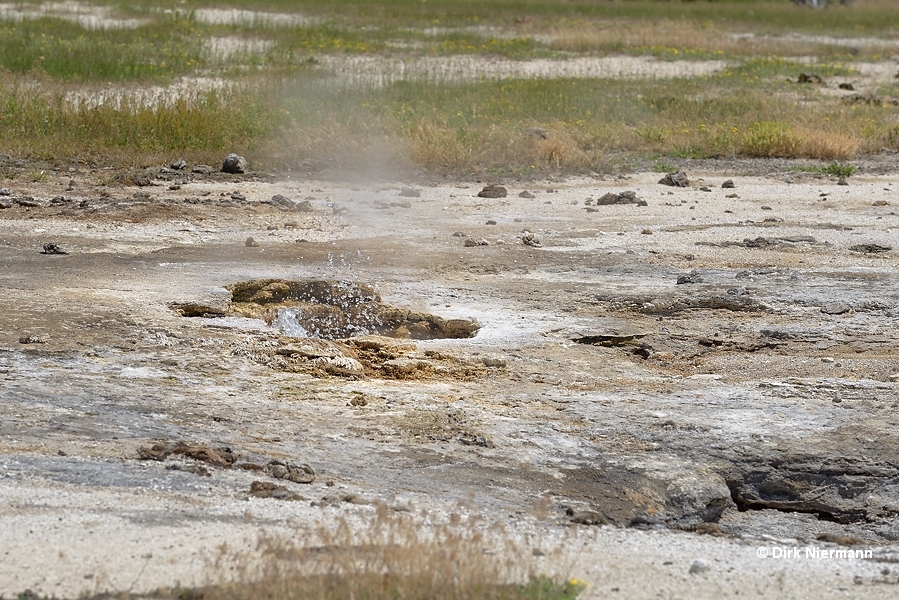
Next stops on the trail are the two Mustard Springs. While West Mustard Spring is a quiet pool, East Mustard Spring plays as a geyser every few minutes up to 3 m (10 feet) high.
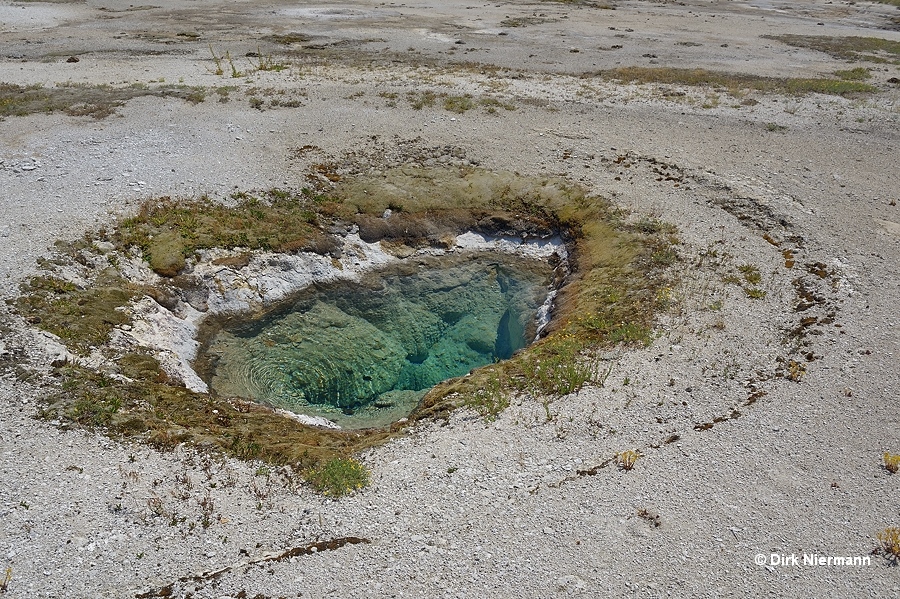
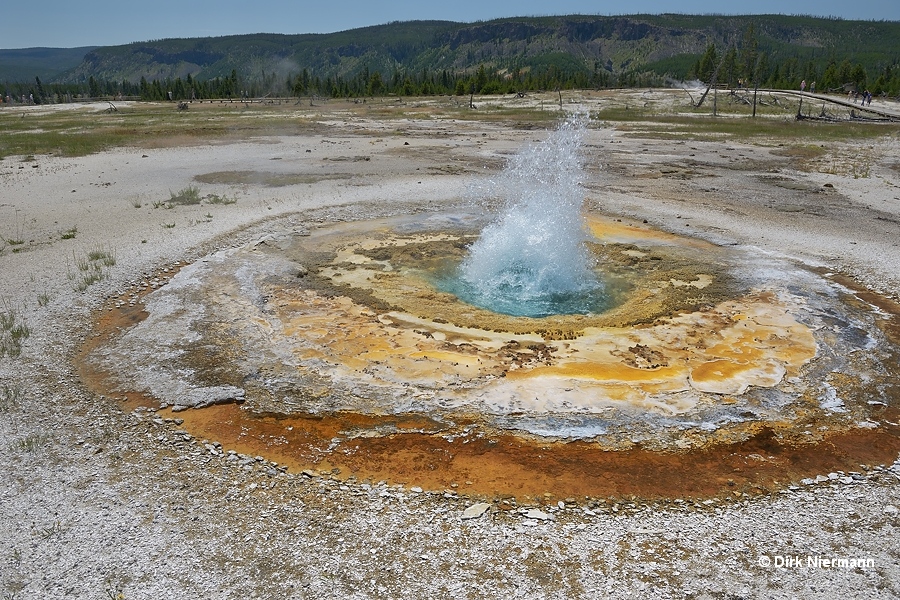
North of the Mustard Springs, on the opposite side of the boardwalk, the "Outpost Complex" occupies the flat. Most of its six members become only visible in eruption. Exceptions are Outpost Geyser, the largest feature, and Sentry Geyser immediately in front of Outpost's crater. Outpost's intervals are 10 minutes on average and it plays up to 2,5 m (8 feet). Most eruptions occur simultaneously with Sentry Geyser.
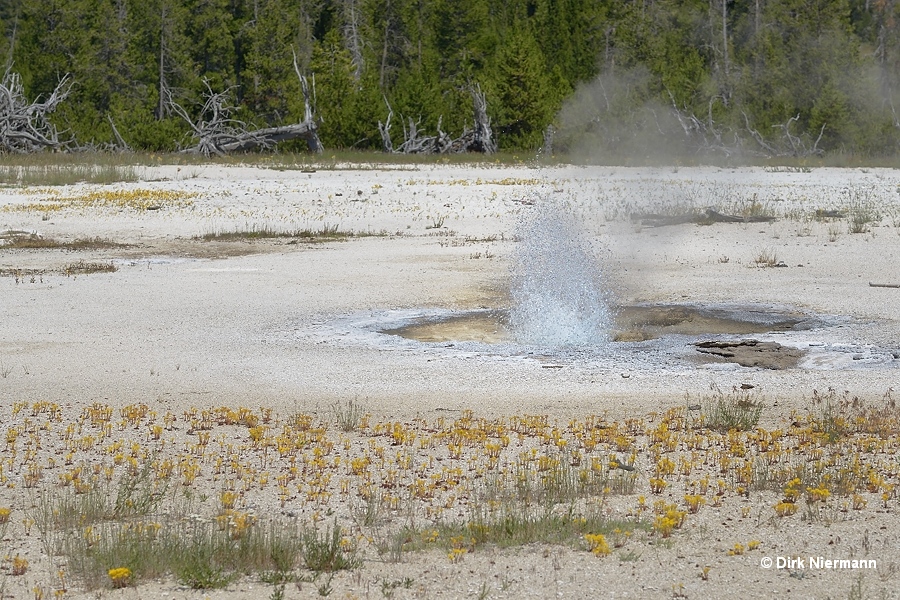
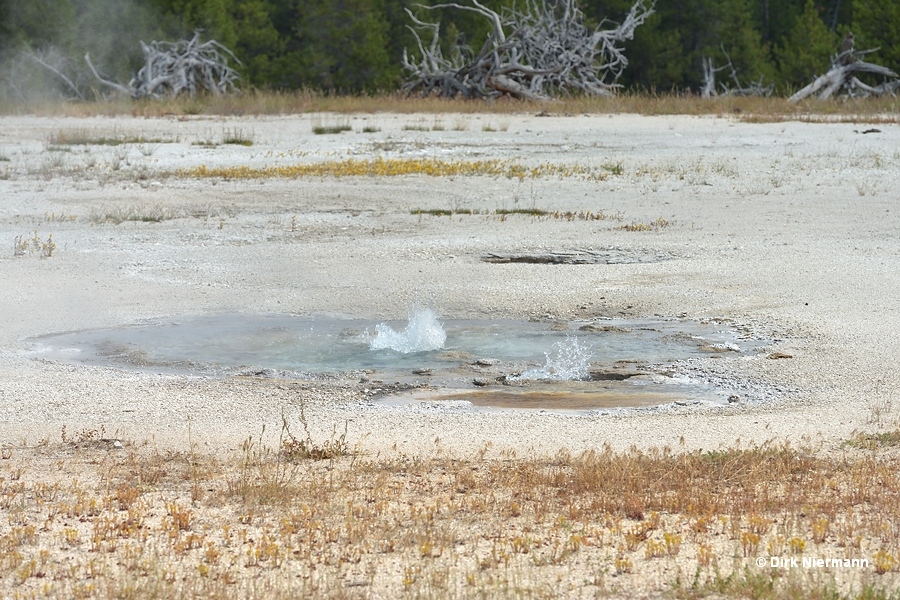
The crater rim of UNNG-BBG-12 on the left side some feet beyond Outpost Geyser is a little bit harder to spot. If the geyser is not dormant, it plays every five minutes, but only up to 50 cm (1 - 2 feet) high.
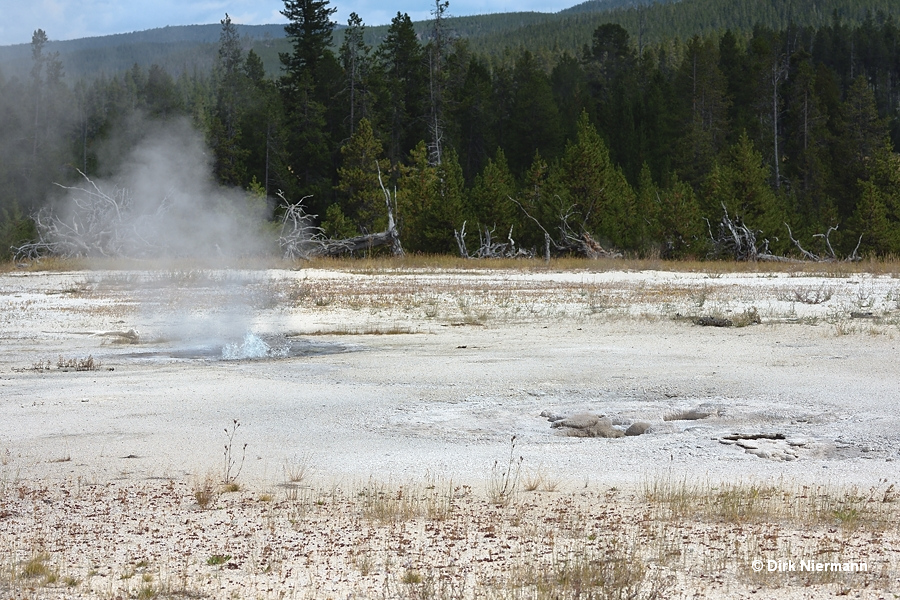
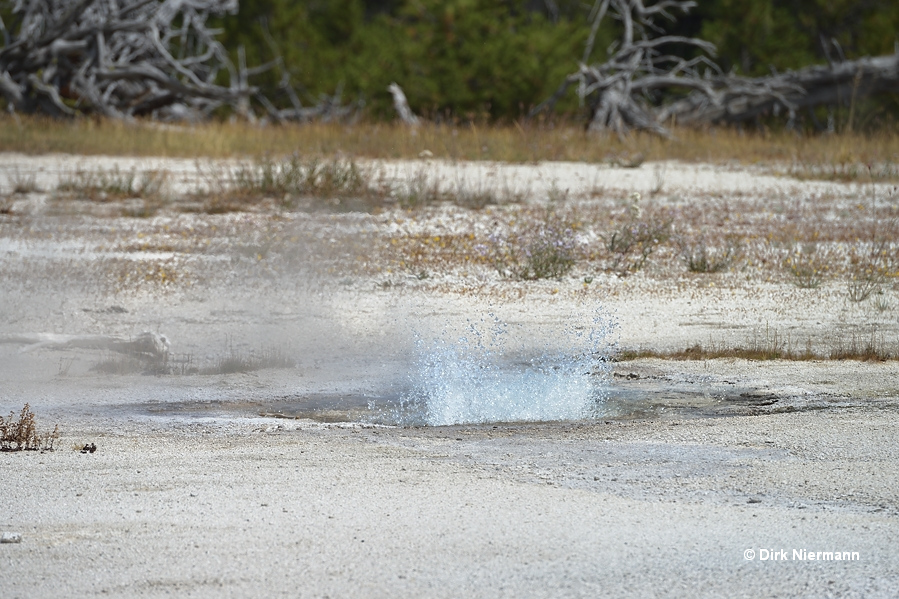
Even further to the back, a good distance beyond Outpost Geyser, lies Yellow Bubbler Geyser. It is less active than the other members of the Outpost Complex and even worse, the eruptions are mostly so low that they hardly surpass the crater rim.
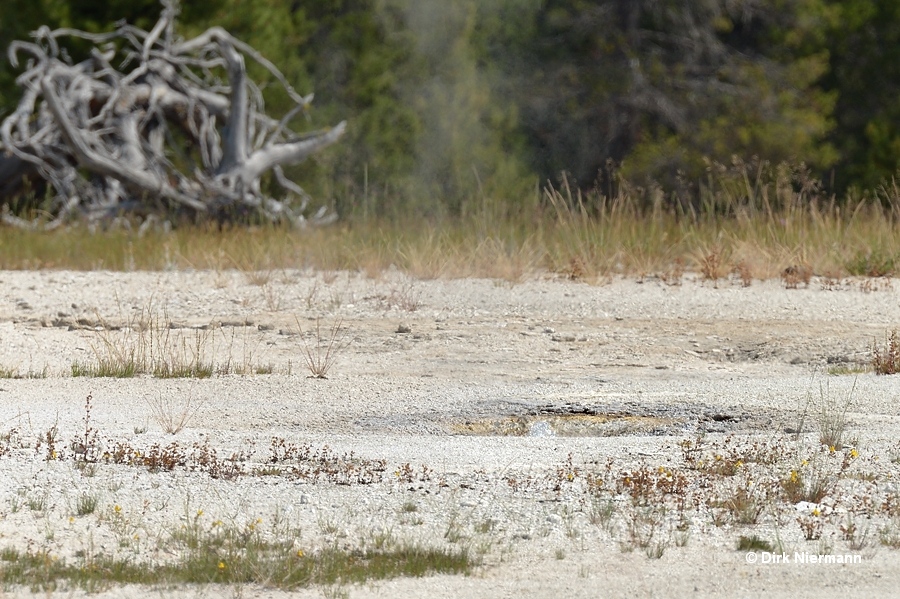
As seen from the boardwalk, Green Bubbler Geyser is the leftmost feature of the group. It is easy to find since the crater sits in front of a raised tree root. The frequent eruptions are as low as the ones of Yellow Bubbler Geyser.
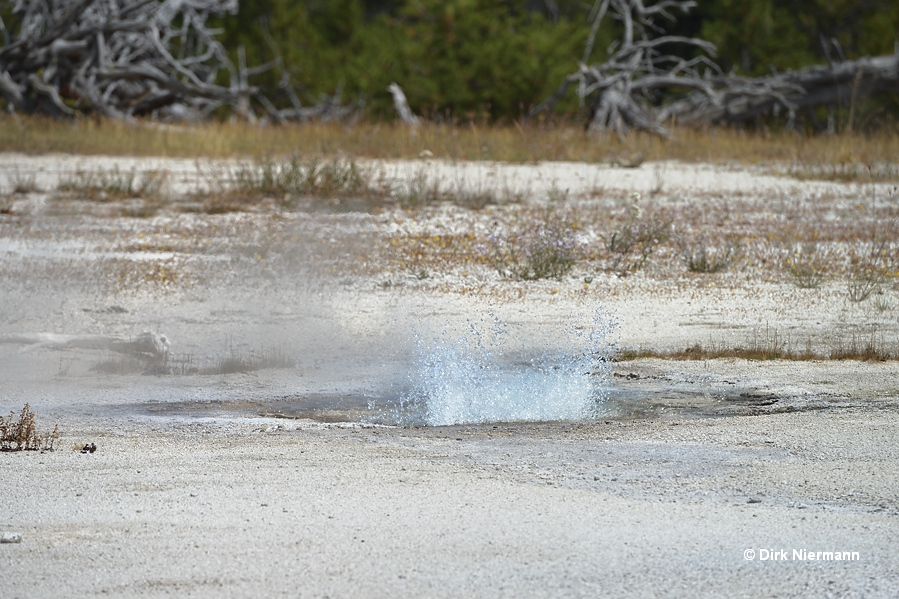
On the way back to Sapphire Pool you pass the gaping holes of Black Pearl Geyser and Coral Geyser. Black Pearl Geyser, on the right (west) side of the boardwalk, has been dormant since 1967. Nowadays activity is reduced to steaming, which seems to be sufficient for the growth of colorful thermophilic bacteria on its walls. However, you have to look closely to detect the traces of life inside the dark hole.
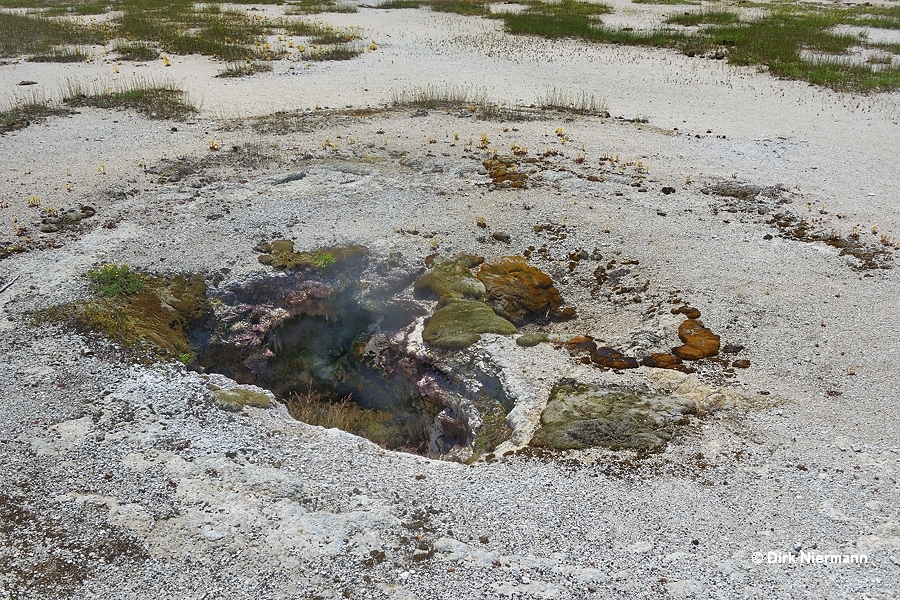
The history of Coral Geyser across the boardwalk is very similar to the one of Black Pearl Geyser. The last eruptions were observed in 1967. Also Coral Geyser emits steam, indicating that activity in the depth hasn't finished yet and hopefully will return to the surface.
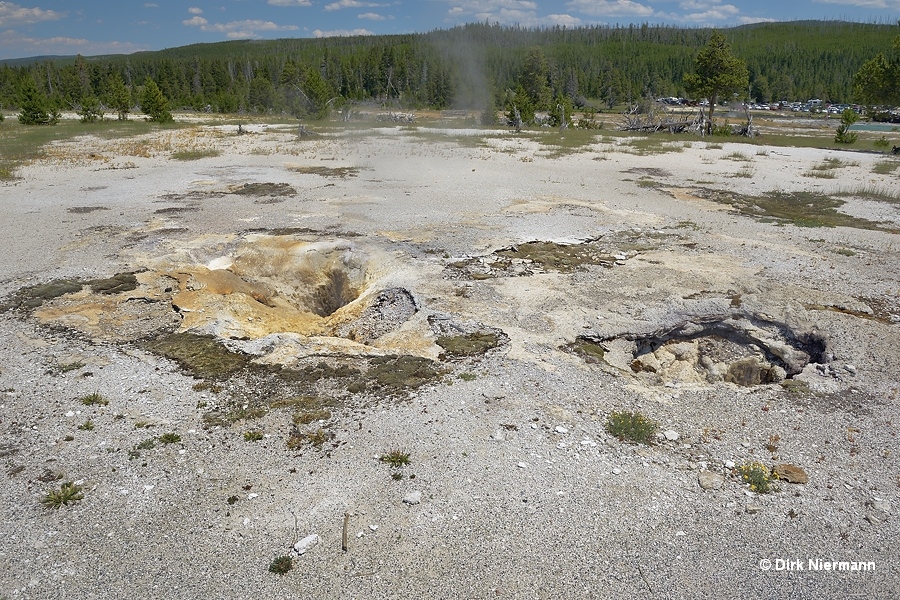
Page 1 2